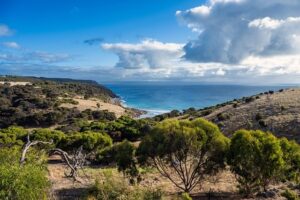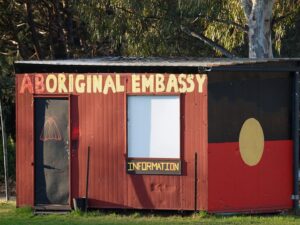 Landscape in cinematography is described as a site that has close association with the theme so that viewers can easily understand the narrative of the movie. Yet having a sense of place” of the location where the story is supposedly taking place, whether true or fictional, also relies on cinematographic directions.
Landscape in cinematography is described as a site that has close association with the theme so that viewers can easily understand the narrative of the movie. Yet having a sense of place” of the location where the story is supposedly taking place, whether true or fictional, also relies on cinematographic directions.
Early filmmakers in Australia used to limit their movies to stories about colonial times, and indigenous history of migrations and cultures. Mainly because their depiction
and grounding can revolve perfectly in Australia’s landscape.
 Yet average film critics and viewers are quick to judge the movies as having cut-and-dried stories about the struggles of life and love in remote stations in the great Australian outbacks. Poignant tales of tragedies, racism and World War II participation as one of the allied countries, had to take place in ideal locations in cities, farms and beaches in Australia.
Yet average film critics and viewers are quick to judge the movies as having cut-and-dried stories about the struggles of life and love in remote stations in the great Australian outbacks. Poignant tales of tragedies, racism and World War II participation as one of the allied countries, had to take place in ideal locations in cities, farms and beaches in Australia.
That changed five decades ago when Australian film producers gave their support to projects that made the country’s landscape the central focus of movies. The change became a solid feature of the Aussie filmmaking industry. Since the 70s, the number of movies produced by the industry grew from an average of 14 per year to 31 in 2000.
In 1979, Mad Max came along and became a series, to which 3 more titles were released as sequels. The movie embodies the changes that the Australian film industry was looking for, including the large use of Australia’s desert landscape. Since then, the film features produced annually grew from 14 films per year, to 31 in the 2000s, to 37 in the 2010s and to 42 in 2020-21 despite the global pandemic.
Australia’s Landscape Provides Perfect Setting for the Award-Winning Mad Max Films
 Many believe that starting with Mad Max, the post-apocalyptic story written and directed by Aussie filmmaker George Miller, the movie world finally recognized the world-class qualities of Australian films. The action flick also launched the international career of Mel Gibson as the movie’s titular character. Gibson went on to effectively play the role of Max Rockatansky in the first Mad Max and in the 2nd and 3rd instalments.
Many believe that starting with Mad Max, the post-apocalyptic story written and directed by Aussie filmmaker George Miller, the movie world finally recognized the world-class qualities of Australian films. The action flick also launched the international career of Mel Gibson as the movie’s titular character. Gibson went on to effectively play the role of Max Rockatansky in the first Mad Max and in the 2nd and 3rd instalments.
Although frequently nominated, the prestigious recognitions finally came in 2016, through the fourth sequel The Fury Road. Starring Tom Hardy as Mad Max along with Charlize Theron as Furiosa, one of the descendants of the people who lived in a once fertile land called The Green Place.
The Fury Road won The Australian Academy of Cinema and Television Arts (AACTA) Best Film and Best Director Award for 2015. It also won the British Academy of Films and Arts (BAFTA) for Best Cinematography and other technical support categories. Additionally, the 4th Mad Max instalment won the 2016 Oscar Awards for Best Movie of the Year and Best Achievement in Directing.
Just a quick note on Australia’s semi-arid topography, which provided the locations that inspired George Miller to depict desert wastelands out of the country’s landscape. Actually, even today, Australian soils are problematic because they have low levels of organic matter, which make them vulnerable to erosion. In Western Australia, building contractors utilise the services of underpinning perth ground specialists, to stabilise the soil and strengthen its composition as foundation of a residence or building.
